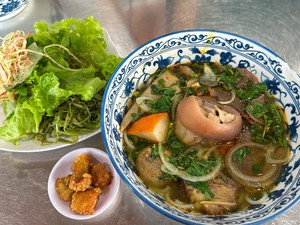
Clear-broth ‘bun bo Hue’ by former Harvard researcher brings quiet charm to Ho Chi Minh City alley
Tucked away at 400/8 Le Van Sy Street, Nhieu Loc Ward (formerly District 3) in Ho Chi Minh City, O Kay quietly serves a single dish: clear-broth ‘bun bo Hue’ (Hue-style spicy beef noodles).
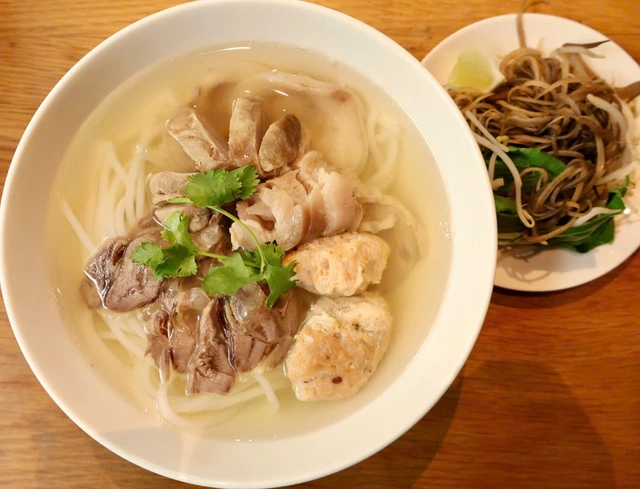
A bowl of clear-broth 'bun bo Hue' at O Kay, priced at VND115,000 (US$4.40), features sliced beef shank, crab cakes, pork knuckle, and comes with a cup of Pu-erh or Snow Shan tea. Photo: Ho Lam
The shop’s bun bo sets itself apart with a remarkably transparent broth yet it still delivers a balanced depth of sour, sweet, and savory flavors.
A quiet corner to enjoy 'bun bo' at O Kay. Video: O Kay
From lab mindset to kitchen philosophy
Ngo Duc Hien, the owner of O Kay shop, was previously a molecular biology researcher at Harvard University.
The shift from lab to kitchen might seem unexpected, but to Hien, it was a natural transition.
Cooking, in his view, is not separate from science. In fact, what he learned in the lab laid the foundation for his cooking philosophy and techniques.
“Cooking bun bo Hue with a lab-like mindset helped me arrive at my desired recipe more quickly,” Hien explained.
“For instance, I don’t estimate fish sauce by eye or use a spoon — I measure it precisely in grams."
For him, in addition to meticulousness and precision, using fresh, high-quality, and authentic ingredients is key to delivering satisfaction and value to diners.
To Hien, the kitchen is a place for understanding, exploration, and interpretation of life.
“A good chef needs the logic and precision of a researcher, alongside the sensitivity of an artist, to craft a delicious dish,” he said.
“In any field, it all comes down to learning.
"I didn’t turn to cooking because I already knew how.
"I turned to it because I didn’t."
Back in 2013, Hien opened a restaurant with the concept of 'evolved Vietnamese food,' offering traditional dishes like bo kho (braised beef), ca kho to (caramelized fish in clay pots), and com nam ca com (rice balls with anchovies), but with inventive cooking methods that gave each dish a sense of both familiarity and surprise.
His latest venture, however, is O Kay and its clear-broth bun bo Hue as he wanted to preserve the traditional flavors of his family while also reflecting the tastes of change and movement.
The broth remains clear, but now includes additions like rich, savory crab cakes and sliced beef shank.
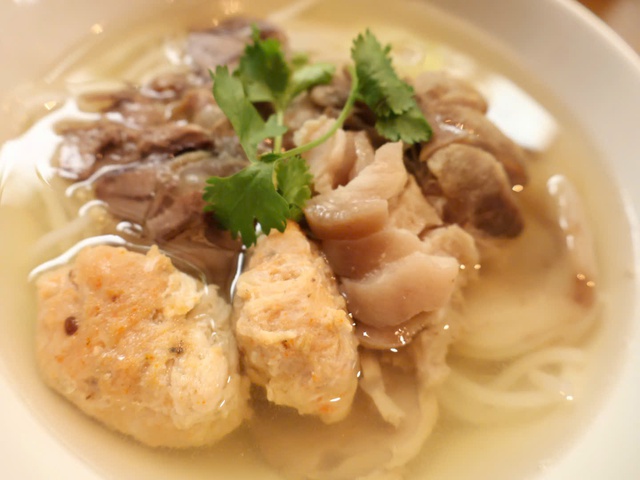
The crab cake and broth are the two highlights most praised by diners. Photo: Ho Lam
Subtle bun bo in a hush of calm
Hien told Tuoi Tre (Youth) newspaper that clear-broth bun bo is not a new concept.
In the past, women in Hue City, central Vietnam often cooked it this way for their families, but as life speeds up, people have less time to prepare the dish in the traditional method which is more time-consuming.
Hien simmers his broth for around 10 hours through two or three stages, including simmering bones and meat, separating the broth, then cooking and seasoning again.
He pays extra attention to how he seasons with ruoc (fermented acetes paste) and lemongrass to avoid making the soup cloudy or overpowering.
“Many think just smashing lots of lemongrass and mixing in ruoc is enough, but if you overdo it or lack finesse, the broth turns murky,” Hien explained.
“Even boiling the meat must be done carefully to maintain the clarity of the soup."
As a result, O Kay’s version of bun bo Hue is mild and delicate.
It does not overwhelm with ruoc or lemongrass but instead offers a harmonious, subtle balance of flavors.
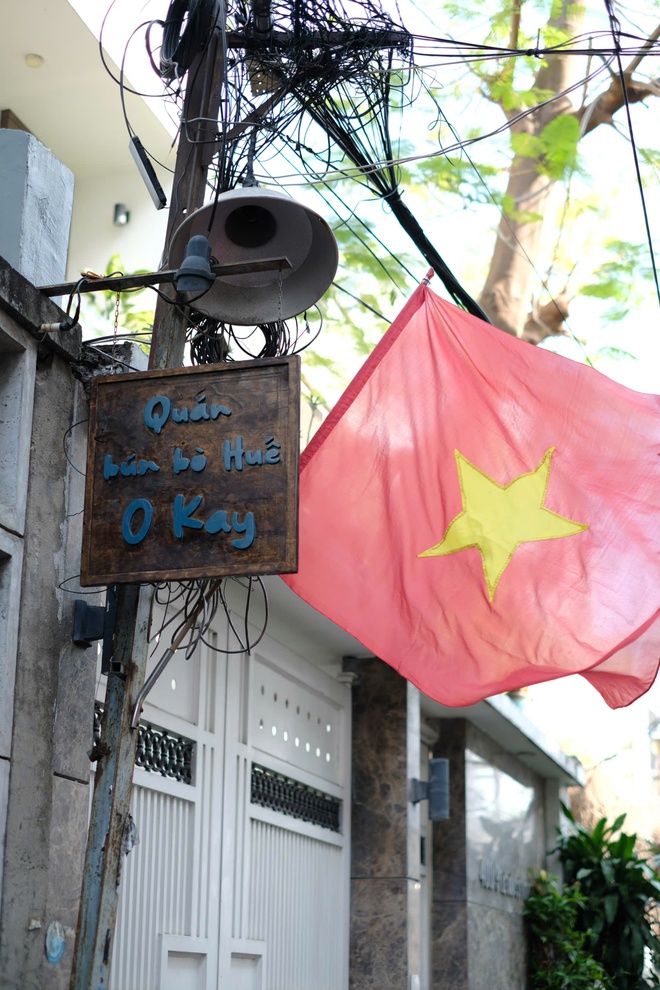
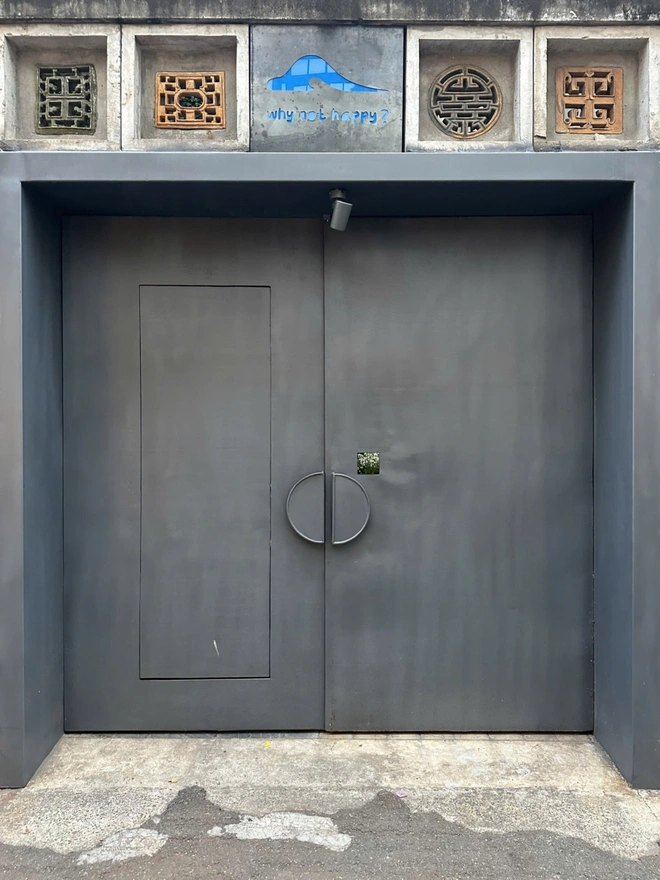
Stepping through O Kay’s gate, diners feel as if they have entered another world in the middle of bustling Ho Chi Minh City. Photo: O Kay
O Kay was originally a coffee shop before Hien turned it into the bun bo Hue restaurant it is today.
The shop has an offbeat name, O Kay, which the Hue-born owner explains is a playful take on 'OK.'
Many diners say that stepping through the gate into O Kay feels like entering another world, a tranquil corner where a bowl of bun bo Hue can offer a rare moment of stillness amid the bustle of Ho Chi Minh City.
O Kay opens daily from 6:30 am to 10:00 am.
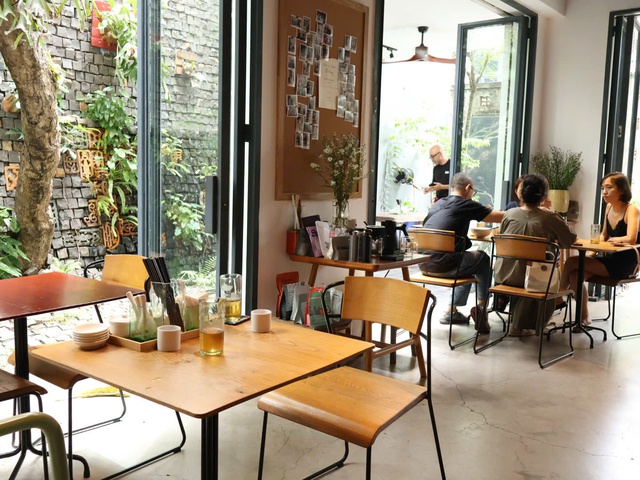
The spacious, breezy setting makes O Kay a peaceful spot for a leisurely 'bun bo Hue' breakfast. Photo: Ho Lam
Ho Lam - Dong Nguyen / Tuoi Tre News
